United Kingdom (London)
The World Bee Project is using Artificial Intelligence and computing technology to understand the local challenges facing bees across the world.
“Throughout my life I’ve done things differently,” explains founder Sabiha Rumani Malik when asked how the idea for the World Bee Project came about. This is perhaps not surprising for such a creative thinker who works at the intersection of design, activism, technology, science and art. “There are amazing people and organisations in the world always doing great things and there’s no point, it seems to me, to replicate those. So I think what’s interesting and fun and creative for individuals is to step into the gap and do something nobody else is doing.”
And that is what Sabiha did with the World Bee Project, an initiative founded in 2014 that remotely monitors bees with hive sensors, using Artificial Intelligence (AI) and acoustic technology. These techniques were already being used by large commercial farms, but the World Bee Project decided to apply the technology to increase this monitoring for small scale farmers.
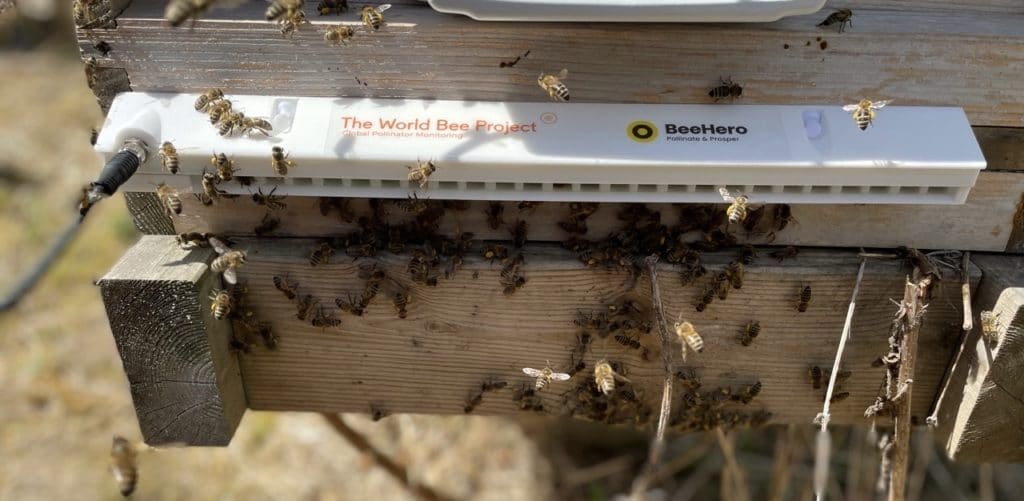
Remote monitoring Artificial Intelligence (AI) embedded sensor technology deployed by The World Bee Project.
The monitoring helps farmers to make the most of their hives by keeping track of the health of the bees. This is done with a scale placed under hive (to check how much honey the bees are making), by monitoring the temperature in the brood nest, and by placing a microphone at the front of the hive to understand the behaviours and health indicators of the colony. But the additional value of the World Hive Network is the way this data from 50,000 intelligent hives is combined with environmental factors to gain insights into why certain bees might be struggling. For example, information is gathered on local weather patterns, diseases, parasites, predator species and pesticides, which, when compared with the data from the bees, can give insight into what environmental factors might be impacting the health of the bees.
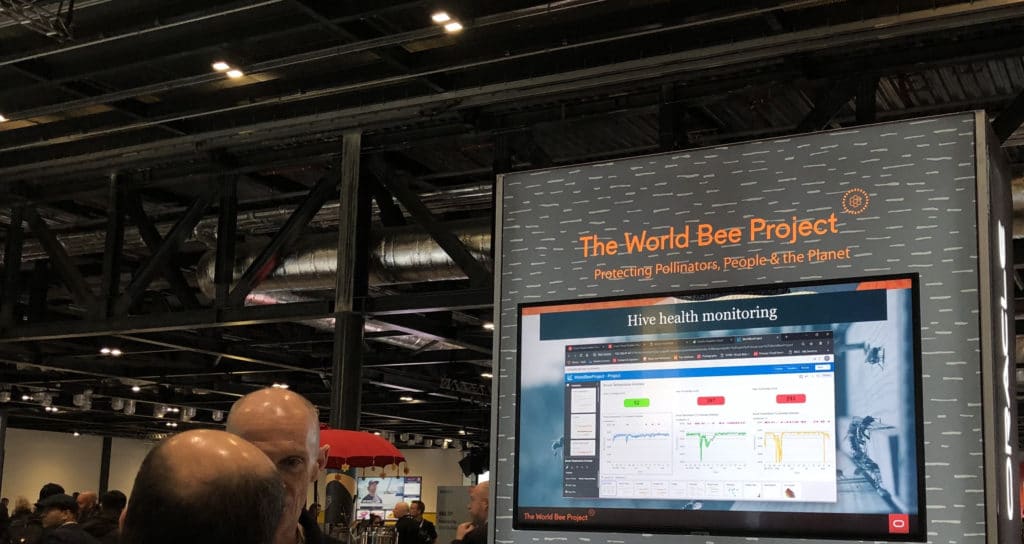
The World Hive Network monitors bee health across regions.
As Sabiha says, “The reasons for bee decline always vary from region to region. There isn’t a silver bullet, there isn’t one solution.” Every region, country or district has their own challenges and local monitoring helps to understand how best to support healthy bee populations. And keeping hives as healthy as possible is vital. Over 75% of the food people eat depends on pollination, and well-managed hives are a fundamental part of many farmers’ livelihoods. The network now has hives in the USA, England, Scotland, and Israel, as well as new projects on the way for Spain, Malta, and India.
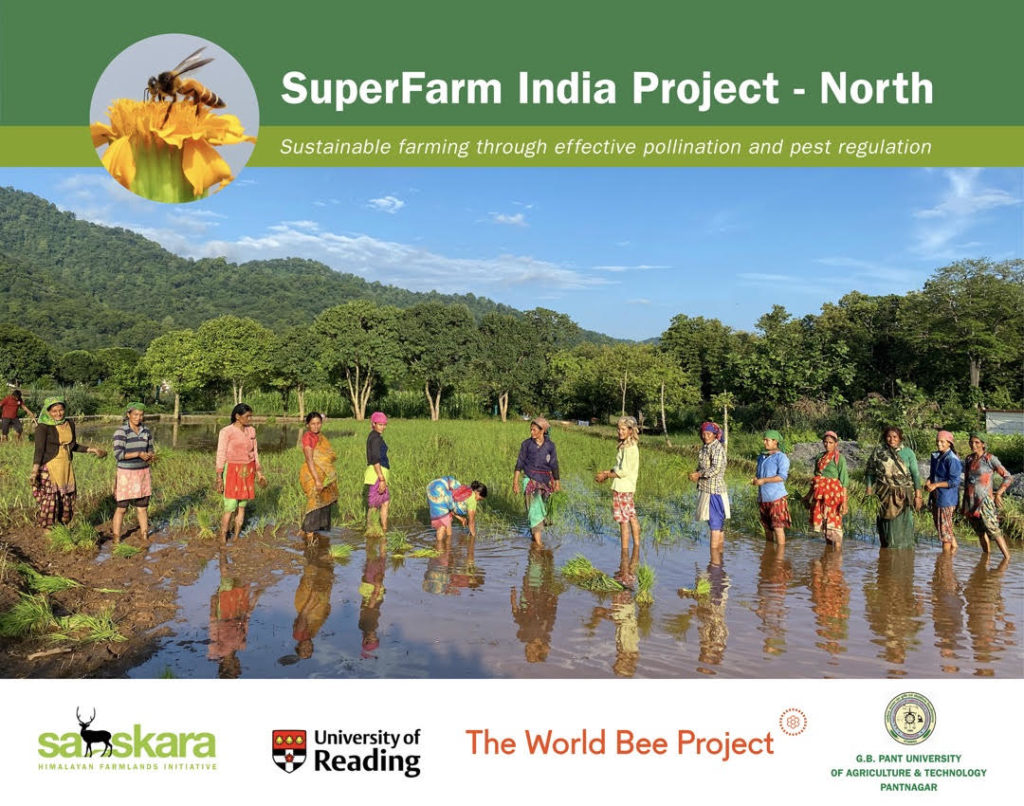
The World Bee Project takes a holistic approach that considers more than just hive management. In one project, for example, they plan to plant local flowering plants and fruit trees to increase forage for all bee species, both those managed and those in the wild. They’ll also train women in precision apiculture (the monitoring of hives to use resources effectively and improve the productivity of the hives) to increase women’s economic stability. This approach is necessary to avoid situations like in London and other cities, where the rise of managed hives led to too many bees and not enough food for them all.
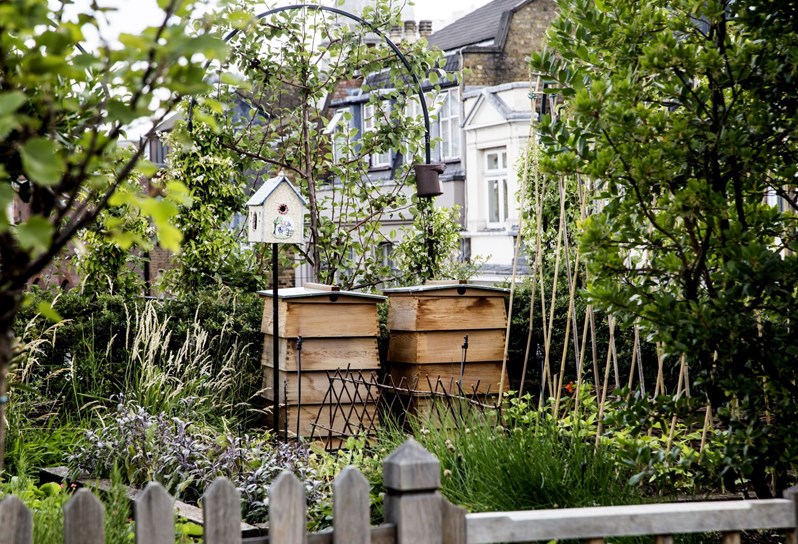
In addition to their hive network, the World Bee Project also runs the World Bee City initiative that provides information on effective urban pollinator management and an accreditation scheme. They recently initiated a partnership with the mayor of Curridabat in Costa Rica, the city that gave citizenship to bees, trees and native plants. Cities are complex ecosystems and bringing back more biodiversity to these urban spaces can have follow-on effects on food production, wellbeing and economies.
The World Bee Project works in an agile way, adapting to the needs of a project and bringing in the experts they need for each project. As Sabiha says, “we need to find something swift, effective and reliable.” This flexibility is a useful way of working as the initiative doesn’t yet have corporate sponsorship and they raise funds project by project. This lack of sustained funding is one of the key challenges. However, Sabiha feels like the initiative is at a tipping point: there are many people eager to collaborate, “we just need to find an easy way of funding these projects,” she explains.
Sabiha is passionate about the work of the World Bee Project, but she is also pragmatic. “Passion is important because you self-motivate then, nobody needs to push you, you’re just doing it because you love it… but the pragmatism and the philosophy need to come together to make these projects effective.”
Despite the very real threat of climate change and the challenges facing bee populations, Sabiha is hopeful about the future. “There is so much dissent and discord in the world, but underlying that there is this great desire and urge for harmony and unity which unites all of us.” Yet she emphasises that participation at all levels is fundamental, “we need to start with children, with education in biodiversity, and discussion of what it means to be a human being.”
Ultimately the aim of the World Bee Project is to bring more people together. “I love that each project is an innovation that can bring pollinators and people together, making individuals and communities more resilient in the face of a fast-changing planet.”
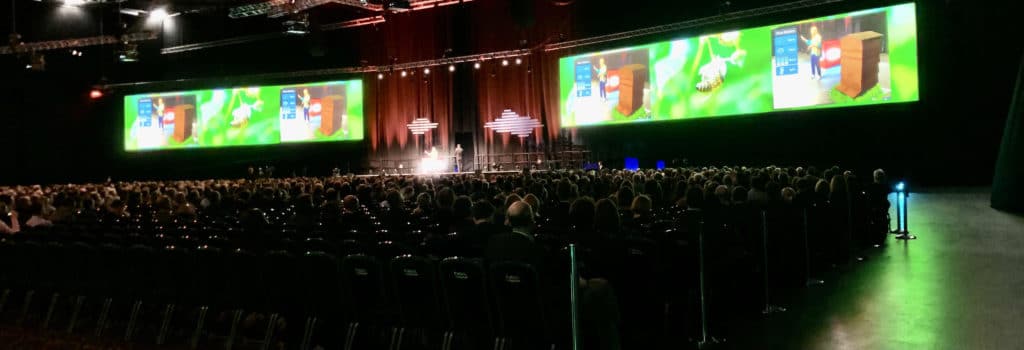
An Oracle Europe event featuring The World Bee Project’s work.
AtlasAction: You can donate to the World Bee Project or you can approach them about volunteering. You can also check out other bee-related projects, like the Flow Hive or you can make your own beehive in 30 minutes.
Bio
Claire is a writer, editor and researcher based in Barcelona, with a focus on arts, cultural diversity and creative expression for social change.
Project leader
Sabiha Rumani Malik, Founder and Executive President
Partners
This project has been selected as part of NatureFutures, a new storytelling project that maps the innovations in wildlife, biodiversity and citizen science and the biologists, engineers, designers and entrepreneurs behind them. Atlas of the Future is excited to partner with the Government of Catalonia.
Support the Atlas
We want the Atlas of the Future media platform and our event to be available to everybody, everywhere for free – always. Fancy helping us spread stories of hope and optimism to create a better tomorrow? For those able, we'd be grateful for any donation.
- Please support the Atlas here
- Thank you!



